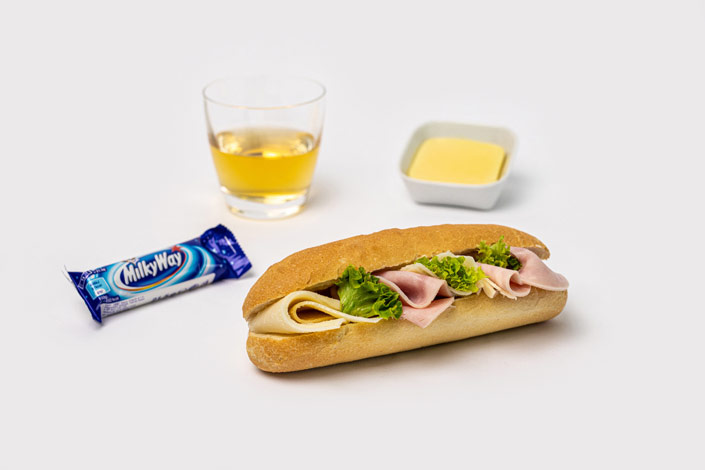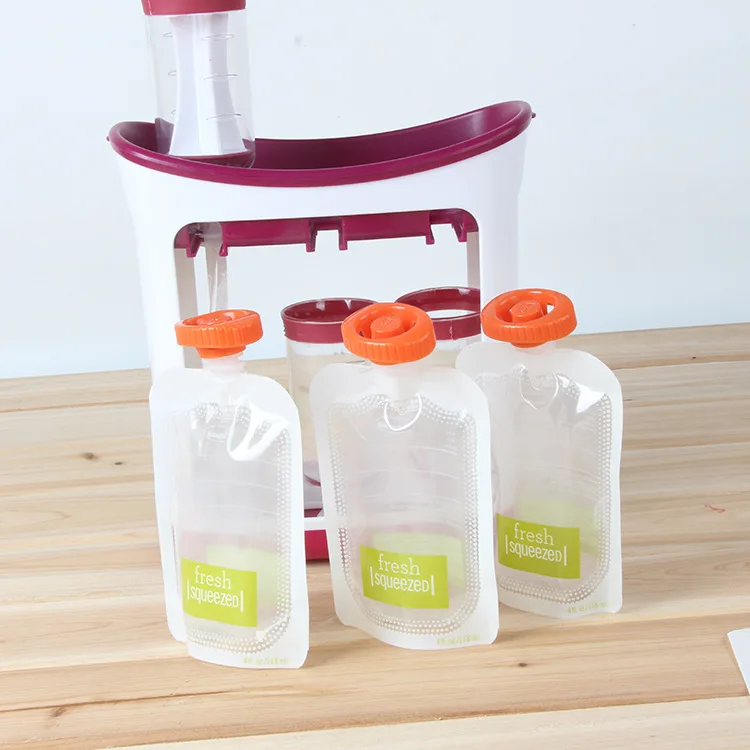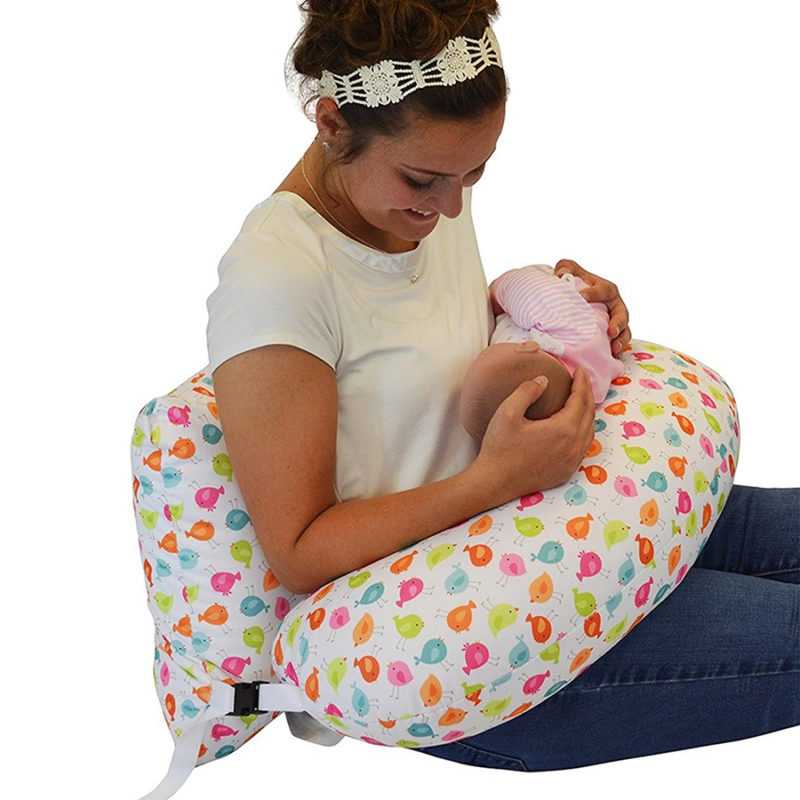What to feed baby mice without mother
Can Baby Mice Survive Without Their Mom? (Here's What You Can Do)
Home / Mice Care / Can Baby Mice Survive Without Their Mom? (Here’s What You Can Do)
Phil August 26, 2018 Mice Care 19 Comments
Want to know – Can baby mice survive without their mom if they’ve been abandoned for some reason and left to fend for themselves?
Baby mice are very vulnerable when left to fend for themselves. It depends just how young they are, but chances are they will not survive without their mom’s – but there are some things you can do to help.
If the mice have just been born they will need some care within hours to stay alive, so you need to act quickly.
If their eyes are open and they have fur they are likely 11 or so weeks and older. At this stage, they are easier to look after but still need your assistance.
There are a few main things you will need to do to help orphaned mice survive. These are; providing warm and safe shelter, feeding them, and stimulating them to pass urine and poop.
Contents
- 1 Helping Orphaned Mice with No Mom
- 2 Stimulating Baby Mice to Pee and Poop
- 3 Feeding Baby Mice
- 4 How Often Do Baby Mice Need to Be Fed?
- 5 Giving Baby Mice a Nice Nest
Helping Orphaned Mice with No Mom
If you’ve come across some abandoned mice, the first thing you need to do is scoop them up safely and carefully check them for any obvious injuries, laboured breathing, and so on.
If you have any concerns or don’t think you can take care of them, take them to a vet or pet rescue centre.
It’s not worth getting stressed or struggling. It’s not an easy task caring for baby mice, but it’s incredibly rewarding if you’re up for it.
There are a number of reasons why we need to help orphaned or baby mice:
- Sometimes a female will have a litter too large, and it’s necessary to separate one or more of the mice to ensure they live.
- Some females can become aggressive towards their young or reject them.
 Again, you’ll need to intervene if either of these is happening.
Again, you’ll need to intervene if either of these is happening. - You may find mice abandoned for some reason. I’ve heard of people finding mice on their doorstep, in a box or bag in their shed, somewhere in their homes, and so on.
Stimulating Baby Mice to Pee and Poop
If a mother was looking after the baby mice they would lick their private areas to stimulate them to pee and poop.
By using a damp cloth, cotton pad, or similar you can replicate this sensation. Do this when you first find the mice, and after every feed.
It’s easier to show you than explain in words. This video should help:
Feeding Baby Mice
Ideally, they will have fed on their mother’s milk for at least the first 48 hours. This milk is called Colostrum, and it’s rich in nutrients and antibodies that babies need in those first hours to build up their immune system.
It’s best to check with your pet store or an exotic pet specialist to see what they recommend depending on the age of the mice.
They will likely recommend some formula, or a kitten/puppy milk replacement. You’re going to need a small syringe to feed babies, some patience, and to feed them fairly often throughout the day.
How Often Do Baby Mice Need to Be Fed?
You should be keeping a close eye on the mice and acting as per their needs or under the guidance of a vet.
As a general rule of thumb, however, here is a table outlining how often you can expect to feed baby mice.
| Age | Feeds Per Day | Frequency of Feed |
|---|---|---|
| <1 Week | 7-8 | Every 1-2 hours and once overnight |
| 1-2 Weeks | 5-6 | Every 3-4 hours and once overnight |
| 2-3 Weeks | 3-4 | Every 4-5 hours |
| 4-5 Weeks | 2-3 | You can introduce crushed mice food blocks |
| 6-7 Weeks | 1 | Crushed mice food blocks and start introducing other foods |
Giving Baby Mice a Nice Nest
All you need is a heating pad and some materials. An old t-shirt or blanket is perfect for making a nest they can snuggle up in.
An old t-shirt or blanket is perfect for making a nest they can snuggle up in.
A heat pad is very important to help keep the mice warm. Just set it to low and keep it under some of the bedding so it doesn’t come into contact with their skin directly.
Keep all the mice together, make sure they can’t escape or crawl away from the nest, keep an eye on them as often as possible and I’m sure they’ll be fine.
That’s all the basics you’ll need to know about helping orphaned mice survive and stay healthy.
As long as you have the time, patience, and plenty of love to give, I’m sure you’ll do just fine if you’re caring for oprhaned mice as their new mom!
About The Author
Phil
I have kept pet mice for a number of years and always had a fascination with these interesting, fun little creatures. I'm always looking for new and interesting mice related information and will always help other mice owners where possible.
Can You Help Baby Mice Survive Without Their Mom?
The purpose of this blog is to share general information and is written to the author's best knowledge. It is not intended to be used in place of veterinary advice. For health concerns, please seek proper veterinary care.
It is not intended to be used in place of veterinary advice. For health concerns, please seek proper veterinary care.
As an Amazon Associate I earn from qualifying purchases.
Most people aren’t too keen on having mice in their homes. You might even actively try to eliminate mice using either humane or lethal methods.
However, it can be very sad when you discover that there are baby mice somewhere on the property. This is especially sad when the baby mice appear to have lost their mother.
Sometimes mothers will have to abandon baby mice for various reasons. It could be that the mother was killed by a predator or a mousetrap, but there are also other reasons to consider.
You’ll even find that some mothers will abandon the babies when they know that they’re about to die. A mother doesn’t want to die near the babies since that could attract predators to the area and ultimately get the babies killed, too.
There are even mouse mothers that just go away because they feel the need to take a break. They might come back after some time with food for the baby mice.
They might come back after some time with food for the baby mice.
If the mother mouse is truly gone, though, then will the baby mice be able to survive? Is it possible for baby mice to survive without their mom?
It Depends
The answer to this question is that it depends on how old the baby mice in question are. If the baby mice are particularly young, then it’s unlikely that they will survive without the mother.
However, if the baby mice are close enough to maturity, then they’re going to have a fighting chance of survival. Newborn baby mice are pretty much helpless because they rely on their mothers for so many things.
Newborn mice can’t eat normal food, and they’re only able to eat by being fed milk by the mother mouse. It takes around one month for newborn mice to be able to eat solid food.
Also, newborn mice can’t even open their eyes or move properly yet. They are pretty much stuck wherever the nest is and are completely reliant on the mother for everything.
Interestingly, even simple actions such as being able to urinate and defecate are taught to baby mice by the mother. Baby mice don’t learn this behavior on their own, and that can lead to survival issues.
Most baby mice that get abandoned by their mothers will never make it out of the nest. They will simply starve to death before they’re able to do anything.
If the baby mouse was close enough to maturity, then there might be a chance, but it’s still unlikely that it will survive. Baby mice are very fragile and not very capable of doing much.
This frailty makes them an easy target for predators, and this means that baby mice that do manage to make it out of the nest might not survive for long.
At Three Weeks Baby Mice Might Have a Chance
Baby mice might have a chance of survival if they are abandoned at three weeks old. At this age, the baby mice will start to be able to open their eyes and explore a bit.
The baby mice will begin to learn how to eat solid food at this point, and that means that they could potentially survive if they can find food. It’s also notable that the muscles of the baby mice will become more developed at this stage, and they’ll be able to be more active than before.
It’s also notable that the muscles of the baby mice will become more developed at this stage, and they’ll be able to be more active than before.
Suddenly, the baby mice are going to be able to stay active during the day, and this means that foraging for food might be a possibility. Survival will still be quite tough for a mouse that is this young, but it’s not impossible like it was when the baby mice were even younger.
At Five or Six Weeks Old the Baby Mice Should Be Fine
At five or six weeks old, things are going to change significantly for baby mice. This is around the time that the baby mice start to grow fur, and they also become even stronger than before.
The energy levels of the baby mice will increase enough that they will be able to pretty much act like normal mice. They can start to explore the world and look for food like mice normally do.
Even if the baby mice are abandoned at this stage, it’s not going to matter all that much. The baby mice have pretty much reached maturity or come close enough that it doesn’t matter any longer.
You Should Ensure That the Mice Have Been Abandoned
If you come across baby mice without seeing an adult mouse with them, then you might assume that they have been abandoned. As mentioned earlier, this might not always be the case.
It’s possible that the mother mouse has just stepped away to look for food or to rest for a spell. The mother mouse could return at some point if you leave the baby mice alone.
This is why many people choose to simply ignore the baby mice that they find because they want to let nature take its course. In some ways, this might be the best thing to do since it’s hard to say what’s really going on with the mother mouse.
If the mother mouse doesn’t appear to be coming back, then you might want to make a decision about whether you’re going to intervene. It’s up to you to figure out if you wish to intervene at all or if you’d rather not try to help.
You Could Help Abandoned Baby Mice
It’s possible that you could help abandoned baby mice to survive if you’re so inclined. It really comes down to how you feel about mice and if you think it’s the right thing to do.
It really comes down to how you feel about mice and if you think it’s the right thing to do.
Baby mice will need a lot of assistance to survive, and this means that you’ll need to have some time to care for them. You’ll need to get them a formula that they can eat and you’ll also have to keep them warm.
Since baby mice don’t have fur, they’re going to be susceptible to the cold. Finding a warm spot for them to stay is imperative, and you’ll also have to feed them the right stuff.
You can buy formula for rodents at pet food stores, and it’s even possible to order the stuff online (link to amazon). Some people also purchase such things from veterinarians, but not all veterinarians care for rodents.
Typically, you’ll be feeding the baby mice a type of liquid formula, and this means feeding the mice with a bottle. You just feed the baby mice until they’re full, and this process usually takes about five minutes.
You’ll also have to go through the process of teaching the baby mouse how to poop and urinate.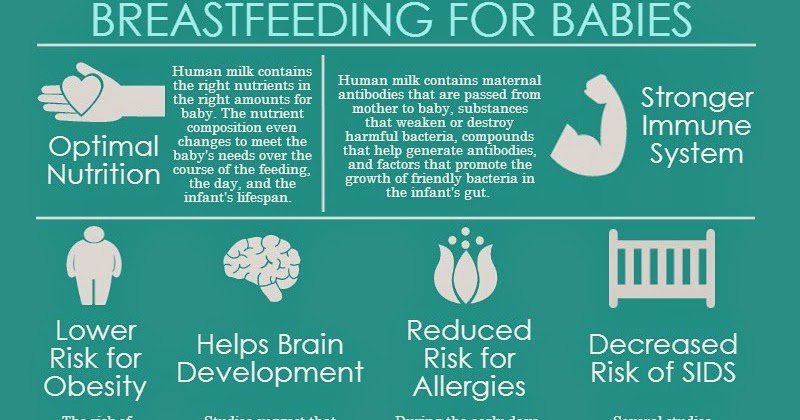 This is an odd thing to have to do, but it can be done by getting a cotton ball damp with water and then stroking it downward underneath the mouse’s tail.
This is an odd thing to have to do, but it can be done by getting a cotton ball damp with water and then stroking it downward underneath the mouse’s tail.
Failure to do this means that the baby mice might rupture their bladders. It’s a strange thing to have to do, but it’s essential for the survival of the baby mice.
Should You Try to Help Baby Mice?
This question is a bit more complicated because many people wouldn’t be inclined to help baby mice. Generally, if you find baby mice that have been abandoned, then they’re likely going to be wild mice.
It would be pretty unusual for a pet mouse to abandon its babies, and this means that these aren’t the type of mice that you want to keep around. Most people would likely choose to humanely exterminate the baby mice.
This is certainly an option, but many people don’t have the heart to do this. It’s one thing to exterminate a fully-grown mouse, but exterminating baby mice is something else entirely.
Regardless, this is likely going to be the best option for many because you’d have to figure out what to do with the mice after caring for them.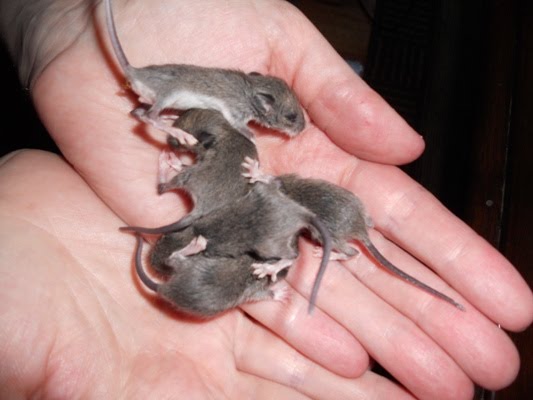 Would you keep them as pets even if it wouldn’t be practical to do so?
Would you keep them as pets even if it wouldn’t be practical to do so?
It’s important to note that this decision is completely up to you. You can decide what the best course of action is based on your own feelings about the baby mice.
If you think that caring for the baby mice is the honorable thing to do, then that’s perfectly fine. You might have a bit of a conundrum about what to do with the mice eventually, but you can deal with that at a later date.
Final Thoughts
Baby mice are unlikely to survive without having a mother to help care for them. Newborn mice are especially vulnerable, and they aren’t even able to open their eyes or move around much for the first three weeks of their lives.
If a mouse is abandoned at around five or six weeks old, then it has a good shot at survival. It’ll start growing some fur and should be able to look around for food. Mice that are younger than this have much worse chances of actually surviving without a mother.
You can try to save the baby mice yourself, but this might not be a good idea depending on your perspective. You can decide what your feelings are, but at least you know what can be done now no matter what you decide to do.
You can decide what your feelings are, but at least you know what can be done now no matter what you decide to do.
Interesting reads:
Can Turtles Flip Themselves Back Over?
What Fruit Can Ducks Eat?
Peculiarities of caring for young animals. Mice
Special care for young animals
Mice develop rapidly, 6–7 days after birth, their body weight doubles, and the size of the body also increases. The sex of animals immediately after birth is difficult to distinguish, but females grow more slowly than males.
After 3-5 days after birth, the ears of ornamental mice open, hair begins to appear on the body. The eyes of mice open at the age of 14 days.
After two and a half weeks after birth, during the absence of the female, the cubs can be taken out of the nest for a while. In this way, you can check their health, as well as determine what gender they are. At the 3rd week of life, the animals get out of the nest and begin to feed on their own, eating, in addition to mother's milk, other types of feed. At this time, you can transplant offspring from the female.
At this time, you can transplant offspring from the female.
In the first weeks of life, mice grow very quickly and in a month reach a weight of 11-12 g. Body length at this age is 6 cm, tail length is 5 cm. Depending on the diet and conditions of keeping, the body weight of animals may vary slightly.
The sex of decorative rodents is determined by external signs. In females, for example, nipples are visible from early childhood. In males, sexual identity immediately after birth is almost not expressed - the testicles are not palpable, since in the first days of the animal's life they lie in the abdominal cavity, and descend into the scrotum only in the second week of life.
Decorative mice grow and develop much more slowly than, for example, voles and other wild mice. The cubs reach full development in a month, by this period they have puberty.
It is important to monitor the growth of the young. Regular weighing of animals helps to control this process.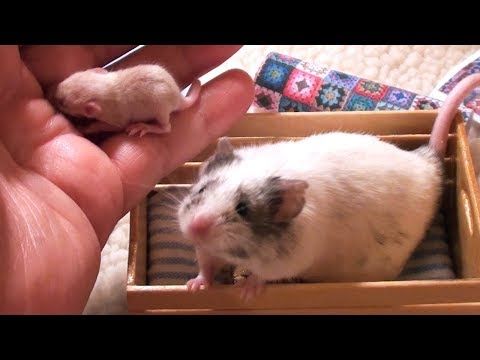 The length of the body is measured from the tip of the nose to the base of the tail using a centimeter tape. When carrying out these procedures, care must be taken in handling mice, to prevent their anxiety.
The length of the body is measured from the tip of the nose to the base of the tail using a centimeter tape. When carrying out these procedures, care must be taken in handling mice, to prevent their anxiety.
Comparing the measurement results with those given in Table. 6 indicators, we can conclude how correctly the development of animals occurs. An increase in body weight and size is an indicator of normal nutrition. In case of deviations, it is recommended to approach the diet of rodents more carefully.
Table 6
Weight of decorative mice depending on age
It is possible to separate cubs from their parents after the manifestation of their independence. Males and females can be kept together in a common cage until puberty. At this time, young animals should be fed in the same way as their parents, paying attention to the fact that the diet includes as much vitamin food as possible (sprouted wheat, fresh herbs, fish oil, etc. ).
).
During lactation, it is recommended to include oatmeal, boiled or pasteurized milk and infant formula in the diet of lactating females. The same products can be given as complementary foods to mice from 3 weeks of age. After some time, other types of feed are gradually introduced into the diet of young animals: bran, milk, dried fruits, crushed grain mixture consisting of oatmeal, sunflower seeds, corn and peas. New types of food are given in small quantities so that the body of mice can gradually get used to them. Green and succulent foods should be introduced into their diet very carefully so as not to cause digestive upset.
In the event that females do not have milk, newborn mice are transferred to artificial nutrition. They are fed from a pipette with 26% dry milk (diluted at the rate of 2 tablespoons per 0.5 cup of warm water), 2-3 drops 6 times a day. After about 3 weeks, they are transferred to 5 meals a day, and after another 1.5–2 months - to 2 meals a day.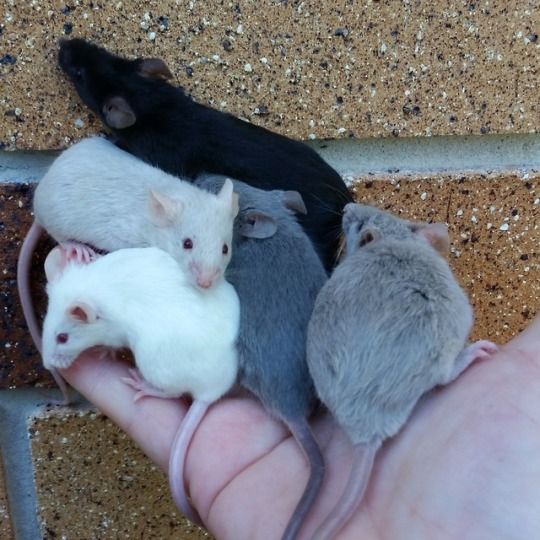 Feeding is done 2 times a day, morning and evening.
Feeding is done 2 times a day, morning and evening.
Young animals should be given limited amounts of water during growth and development.
Both with natural and artificial feeding of rodents, it is necessary to regularly give them types of feed rich in vitamins and microelements.
When artificially feeding decorative mice, it is recommended to carefully observe sanitary and hygienic rules. Drinkers and pipettes should be washed and boiled before each use to prevent disease.
Already shortly after giving birth, the female mouse is capable of repeated fertilization, since at this time she has the so-called postpartum estrus. Therefore, during this period it is better not to allow the male to her, since pregnancy that occurs during the period of feeding the cubs can greatly weaken the body of the female.
As mentioned above, artificial feeding is a very difficult task, and many cubs, despite all human efforts, do not survive. One of the reasons for this may be that the baby was born very weak or artificial feeding began too late for him.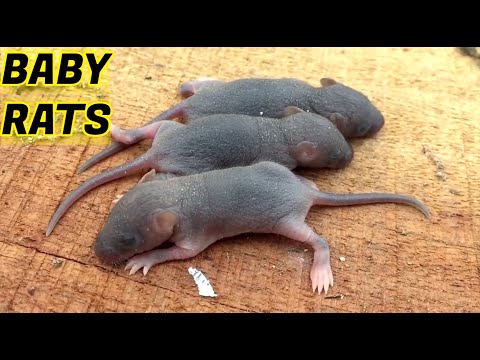 Another common cause of death for motherless babies is inhalation of milk. In addition, mice can die from infection, since no food other than mother's milk contains antibodies that prevent harmful viruses and bacteria from entering the animals' body.
Another common cause of death for motherless babies is inhalation of milk. In addition, mice can die from infection, since no food other than mother's milk contains antibodies that prevent harmful viruses and bacteria from entering the animals' body.
Grown-up mice
Caring for young animals, while observing the basic rules of keeping, does not require much effort, especially if the female takes care of the offspring and does not refuse to feed. In addition to regular weighing, you should also pay attention to the general condition and behavior of the mice. This allows you to timely identify deviations in physical development and correct them.
Young mice are especially shy and should be gradually accustomed to human presence. When examining and feeding, try to avoid sudden movements and loud noises.
This text is an introductory fragment.
Young Animal Care
Young Animal Care Hatched chicks do not regulate body temperature well, so they need to create an optimal temperature regime for them. In the first week, the temperature should be 32 ° C, in the second - 29°C, third - 27 °C, fourth - 24 °C, fifth - 21 °C, in
In the first week, the temperature should be 32 ° C, in the second - 29°C, third - 27 °C, fourth - 24 °C, fifth - 21 °C, in
Young Animal Care
Young Animal Care The temperature in the room where the ducklings are kept should be 28–30 ° C in the first week, 20–22 ° C in the second, and 18–20 ° C in the third. Chicks should be protected from drafts. We recommend using wood shavings or
as bedding.Young stock care
Young Animal Care After hatching, the goslings are allowed to dry under the goose, then they are placed in a basket or box and kept in a warm place with good ventilation. After the withdrawal of all the goslings in the evening, they sit down with the goose and see if she accepted them. In addition to your own, you can go to the goose
Young Animal Care
Young Animal Care You can grow turkey poults under a brood hen, in cages, on a paddock. The first 8 weeks are the most crucial period, as a rule, at this time, the chicks are raised under a brood hen or indoors, and then they are released for walking. Up to 18
The first 8 weeks are the most crucial period, as a rule, at this time, the chicks are raised under a brood hen or indoors, and then they are released for walking. Up to 18
Young Animal Care
Young Animal Care After drying, the chicks are placed in cardboard boxes or boxes, 15–20 heads per 1 m2 of floor area. The floor of the box is covered with paper or woven bedding, which is changed every day. To heat the room in which the cesareans are kept, use a lamp,
Features of caring for a kitten
Features of caring for a kitten Taking care of a kitten is not just about washing its bowl and cleaning out its litter box. It is also care for the coat, eyes, ears and paws of the kitten. Counts. that a three-month-old baby has already completed a course of study with his mother and learned some hygiene rules. He
14 Special care for different breed groups
fourteen Features of care for different groups of breeds Dogs have always helped a person to hunt, herd livestock, guarded, etc. Depending on the work that they had to do, dogs began to be classified as hunting, hounds and greyhounds, service dogs,
Depending on the work that they had to do, dogs began to be classified as hunting, hounds and greyhounds, service dogs,
Young Animal Care
Young Animal Care The jigging of rabbits from a rabbit is one of the most crucial moments in rabbit breeding. If, after weaning from the mother, the young animals are not provided with the correct conditions for keeping and feeding, this threatens with colds and gastrointestinal diseases. Not
5 CAT BREEDS AND CARE
5 CAT BREEDS AND PECULIARITIES OF CARE OF THEM Currently, there are many breeds of cats that differ from each other not only in appearance, but also in character. When choosing a future pet, you should be aware of the habits inherent in each breed, and in which
Special care for different breeds
Features of care for various breeds Persian cats have perhaps the thickest and longest hair among all breeds, so it is hair care that should be given special attention. The Persian cat should be combed daily, carefully unraveling the tangles. Not
The Persian cat should be combed daily, carefully unraveling the tangles. Not
8 Peculiarities of caring for puppies of different breeds
eight Features of caring for puppies of different breeds By purchasing a puppy, you get not only a pet, but also a friend. Unfortunately, sometimes dog owners unknowingly harm their pets, because they do not know what kind of care puppies of a particular breed need. Often dogs
Special care for different breeds
Features of care for various breeds Persian cats have perhaps the thickest and longest hair among all breeds, so it is hair care that should be given special attention. The Persian cat should be combed daily, carefully unraveling the tangles. Not
Special care for hard coat
Features of caring for coarse hair Rigid outer, wiry hair reliably hides a short, dense and delicate undercoat.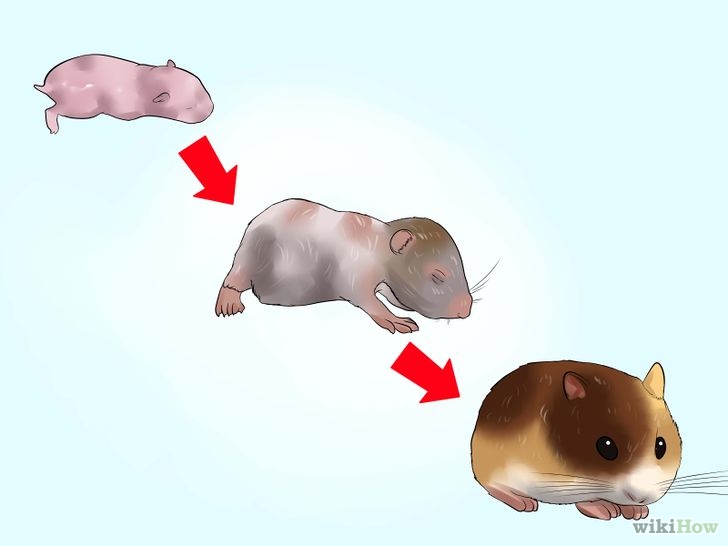 Such a cover well protects the dog from rain, cold and heat, insect bites and much more. Coarse wool almost no
Such a cover well protects the dog from rain, cold and heat, insect bites and much more. Coarse wool almost no
Features of keeping a puppy and caring for him
Features of keeping a puppy and caring for him The puppy requires constant attention, especially in the first days of life in a new
for him4 Hound breeds and their care
four Breeds of hounds and features of their care With the advent of new types of hunting in the Middle Ages, many new breeds of hounds were bred. Their appearance, as well as field qualities, largely depended on the tasks being solved, as well as on the characteristics of the terrain and the beast that lived there. AT
Special care during shedding
Features of care during molting Periodically, chickens molt - the replacement of old feathers with new ones. The replacement mechanism is due to the expulsion of old, dying feathers, new, growing ones. There are two types of molting - juvenile and
The replacement mechanism is due to the expulsion of old, dying feathers, new, growing ones. There are two types of molting - juvenile and
Care of motherless mice. Mice
Care for motherless mice. MiceWikiReading
Mice
Krasichkova Anastasia Gennadievna
Contents
Care of motherless mice
If the female died during childbirth or a few days after them, or she refuses to feed her cubs, then in the absence of infectious diseases, small mice can be planted with females with small offspring. Before doing this, the orphaned animals must be marked, and their fur rubbed with old sawdust taken from the cage of the future foster mother: having felt its own smell, the mouse will accept the babies.
If the owner fails to find a foster mother for orphaned babies, then he will have to take care of them and feed them with infant formula.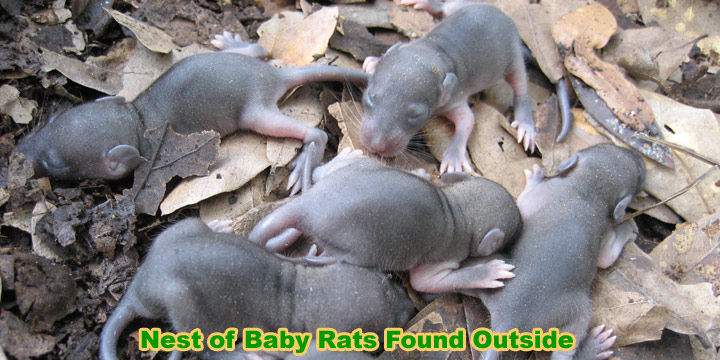
Artificially fed mice will have slightly worse coats than other pups. Rodent milk contains a component that promotes the development of hair. On this occasion, you should not show much concern: when the baby begins to eat on his own, his normal hair growth will begin. However, she will look healthy no earlier than in 2 months.
An owner who takes care of orphaned mice must be prepared for the fact that the babies may die, despite his best efforts to save their lives. In this case, one cannot blame oneself, since the result of artificial feeding depends not only on the attention and care of the owner, but also on the viability of rodents. The smaller and weaker the cub, the less likely it is to survive.
This text is an introductory fragment.
Care
Care A cat needs regular care for its coat, eyes, ears, nose, etc. This will allow the owner not only to constantly take care of the beauty of the animal, but also to maintain its physical condition (stimulate blood circulation, strengthen muscles, etc.). Cats from
This will allow the owner not only to constantly take care of the beauty of the animal, but also to maintain its physical condition (stimulate blood circulation, strengthen muscles, etc.). Cats from
Care
Care In a healthy dog, the skin is covered with a biologically active film that has disinfecting and deodorizing properties, and the coat is lubricated with sebum, which gives the hair a shiny healthy look. A healthy dog's coat is odorless, shiny and clean. So
Weaning of puppies from mother
Weaning puppies from mother On sale there are various foods for puppies of different ages, from bitch milk and cereals, ending with dry food. Complementary foods are introduced from three weeks of age. You can feed babies from a heavy pan, and if the litter is large - from
8 Maintenance
eight Care Guinea pigs often need brushing, clipping of overgrown claws, dental care, and sometimes bathing.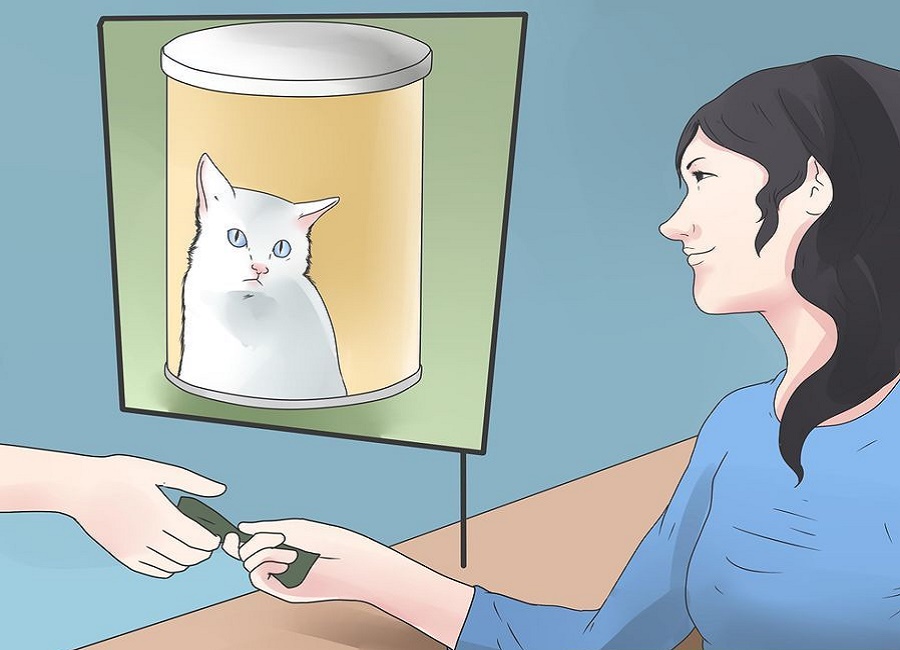 Combing Short-haired individuals do not need combing, however, if desired, you can comb the animal's fur with a soft brush. If the animal is
Combing Short-haired individuals do not need combing, however, if desired, you can comb the animal's fur with a soft brush. If the animal is
Baby Care
Baby care Cubs of guinea pigs are born covered with soft smooth fur. Since their eyes open slightly 11–13 days before birth, babies can see within a few minutes after their birth. Their hearing is also quite developed.
Care
Care Your pet needs regular care for its coat, eyes, ears, nose, etc. This will allow you not only to constantly take care of the beauty of the animal, but also to maintain its physical condition (stimulate blood circulation, strengthen muscles, etc.). Cats from
Care
Care Your pet needs regular care for its coat, eyes, ears, nose, etc. This will allow you not only to constantly take care of the beauty of the animal, but also to maintain its physical condition (stimulate blood circulation, strengthen muscles, etc.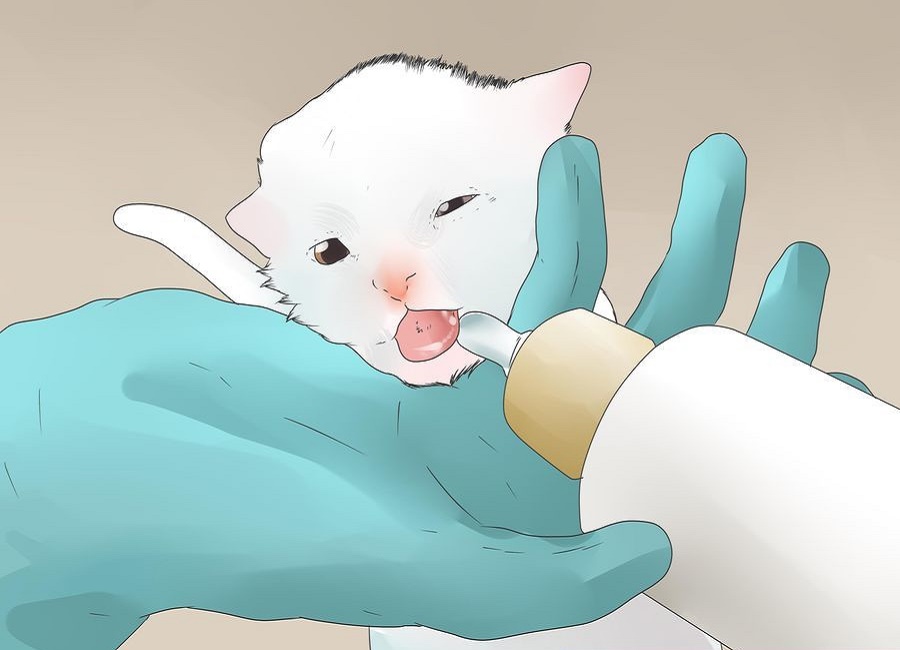 ). Cats from
). Cats from
Care
Care Your pet needs regular care for its coat, eyes, ears, nose, etc. You should not only constantly take care of the beauty of the animal, but also maintain its physical condition (stimulate blood circulation, strengthen muscles, etc.). Cats by nature
First aid for weak newborn puppies and feeding of motherless puppies
First aid for weak newborn puppies and feeding puppies left without a mother Sometimes it happens that a puppy is born very weak, his breathing is rare and unstable, which means that all of the above actions have not been carried out with him or they are not
7. Maintenance
7. Care Care. Preventive checkup. Combing. Bathing. Dental care. Clipping of claws. Quarantine. Signs of the disease.





